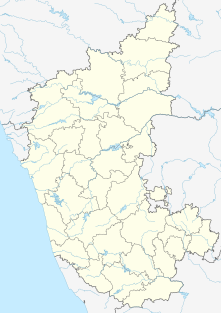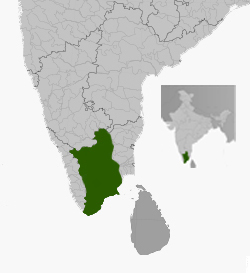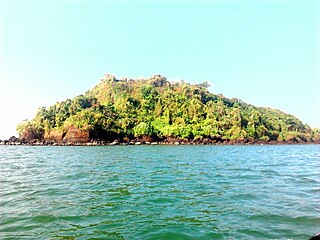
Chitradurga district is an administrative district of Karnataka state in southern India. The city of Chitradurga is the district headquarters. Chitradurga gets its name from Chitrakaldurga, an umbrella-shaped lofty hill found there. Tradition dates Chitradurga District to the period of the Ramayana and Mahabharata. The whole district lies in the valley of the Vedavati River, with the Tungabhadra River flowing in the northwest. During the British times it was named Chitaldroog. The district was practically ruled by all the well known dynasties that ruled Karnataka.

The history of southern India covers a span of over four thousand years during which the region saw the rise and fall of a number of dynasties and empires. The period of known history of the region begins with the Iron Age period until the 15th century CE. Dynasties of Chera, Chola, Pandyan, Chalukya, Pallava, Satavahana Rashtrakuta, Kakatiya, Reddy dynasty, Seuna (Yadava) dynasty and Hoysala were at their peak during various periods of history. These Dynasties constantly fought amongst each other and against external forces when northern armies invaded southern India. Vijayanagara empire rose in response to the Muslim intervention and covered the most of southern India and acted as a bulwark against Mughal expansion into the south. When the European powers arrived during the 16th and 18th century CE, the southern kingdoms, most notably Tipu Sultan's Kingdom of Mysore, resisted the new threats, and many parts eventually succumbed to British occupation. The British created the Madras Presidency which acted as an administrative centre for the rest of South India, with them being princely states. After Indian independence South India was linguistically divided into the states of Andhra Pradesh, Tamil Nadu, Karnataka, Telangana and Kerala.

Holalkere is a town and taluk headquarters located near Chitradurga in the Indian state of Karnataka.

The Reddi kingdom or Kondavidu Reddi kingdom was established in southern India by Prolaya Vema Reddi. The region that was ruled by the Reddi dynasty is now part of modern-day coastal and central Andhra Pradesh. Prolaya Vema Reddi was part of the confederation that started a movement against the invading Turkic armies of the Delhi Sultanate in 1323 and succeeded in repulsing them from Warangal.

Chikjajur is a town in Karnataka. The town is served by a railway line. Bharamannaikanadurga is a nearby place known historically as Bharamannaika who ruled the region as early as 1455. He is the close relative of Madakari Nayaka who ruled Chitradurga during that period. Chikjajur later emerged as the market centre for surrounding regions there.

The Musunuri Nayakas were warrior kings of 14th-century South India who were briefly significant in the region of Telangana and Andhra Pradesh. Musunuri Kapaya Nayaka is said to have taken a leadership role among the Andhra chieftains and driven out the Delhi Sultanate from Warangal. But his rise was soon challenged by the Bahmani Sultanate and he was defeated. The Recherla Nayakas wrested power from him in 1368.

Chitradurga is a city and the headquarters of Chitradurga district which is located on the valley of the Vedavati river in the central part of the Indian state of Karnataka. Chitradurga is a place with historical significance which is located to the North West about 200 km from the state capital Bengaluru. Chitradurga is a major tourist hub in Karnataka.

Nayakas of Chitradurga ruled parts of eastern Karnataka during the post-Vijayanagara period. During the rule of Hoysala Empire and Vijayanagara Empire, they served as a feudatory chiefdom. Later after the fall of the Vijayanagara empire, they ruled at times as an independent Chiefdom and at other times as a vassal of the Mysore Kingdom, Mughal Empire and Maratha Empire. Finally their territories merged into the province of Mysore under the British.

Nayakas of Keladi (1499–1763), also known as Nayakas of Bednore and Ikkeri Nayakas, were an Indian dynasty based in Keladi in present-day Shimoga district of Karnataka, India. They were an important ruling dynasty in post-medieval Karnataka. They initially ruled as a vassal of the famous Vijayanagar Empire. After the fall of the empire in 1565, they gained independence and ruled significant parts of Malnad region of the Western Ghats in present-day Karnataka, most areas in the coastal regions of Karnataka, and parts of northern Kerala, Malabar and the central plains along the Tungabhadra river. In 1763 AD, with their defeat to Hyder Ali, they were absorbed into the Kingdom of Mysore. They played an important part in the history of Karnataka, during a time of confusion and fragmentation that generally prevailed in South India after the fall of the Vijayanagar Empire. The Keladi rulers were Veerashaivas by faith. The Haleri Kingdom that ruled over Coorg between 1600 A.D and 1834 A.D. was founded by a member of the Keladi family.

Chitradurga Fort or as the British called it Chitaldoorg, is a fortification that straddles several hills and a peak overlooking a flat valley in the Chitradurga District, Karnataka, India. The fort's name Chitrakaldurga, which means 'picturesque fort' in Kannada, is the namesake of the town Chitradurga and its administrative district.

The Madurai Nayaks were rulers of Telugu origin from around 1529 until 1736, of a region comprising most of modern-day Tamil Nadu, India, with Madurai as their capital. The Nayak reign was an era noted for its achievement in arts, cultural and administrative reforms, revitalization of temples previously ransacked by the Delhi Sultans, and inauguration of a unique architectural style.

Kadalbal is a historic town in the Indian state of Karnataka. It is very close to the district headquarters, Davangere. The name is derived from two words, kadalu means sea in Kannada and baLa means son in Kannada. The entire meaning of the name stands for 'son of sea' in Kannada.

Ontisalaga Madakari Nayaka or Madakari Nayaka V or ``` Karigundi Nayaka``` 1742 - 1782, was the last ruler of Chitradurga, India, he belongs to valmiki caste of india and considered to be the greatest of the Nayakas of Chitradurga and also sirsi, Karigundi. He administered from 1754 to 1779. He also gained the title of Eppatelu Palegarara Ganda/Minda by Peshwa Madhavrao I after he helped him win the Nidagallu Fort.

Bharamasagara is a village in the southern state of Karnataka, India. It is located in the Chitradurga taluk of Chitradurga district in Karnataka.

Turuvanur is a village in the southern state of Karnataka, India. It is located in the Chitradurga taluk of Chitradurga district in Karnataka.
Uchangidurga is a village in the southern state of Karnataka, India. It is located in the Harapanahalli taluk of Vijayanagara district in Karnataka.

Durgaastamana is a 1982 historical novel by the Kannada novelist and scholar T. R. Subba Rao, popularly known as TaRaSu. As the name indicates, the book charts the downfall of the Nayakas of Chitradurga, a dynasty that ruled there for two centuries. The story follows the epic battle between Madakari Nayaka and Hyder Ali of Mysore in 1779, as the latter lays siege to the fort, and the events and political intrigues leading up to it.

Basavaraj Durga Island is an island in the Arabian Sea near Honnavar. It is part of Honnavar Taluk in Karnataka State of India.

The Ranganatha Swamy Temple at Nirthadi, is a post-Vijayanagara Empire re-construction. Nirthadi is a village in the Davangere district of Karnataka state, India. According to noted historian and epigraphist Benjamin Lewis Rice, a Kannada language inscription dated 1698 AD in the temple premise describes the destruction of the original temple by the armies of Mogul emperor Aurangzeb in 1696 AD. The Chitradurga chief Baramappa Nayaka (r.1689–1721) rebuilt the temple in 1698 AD. The monument is protected by the Karnataka state division of Archaeological Survey of India.

Haagalavaadi is a town in the Tumkur District of the Indian state of Karnataka. It belongs to the Bangalore Division. It is located 50 km from the district headquarters Tumkur. Bangalore is the nearest Metropolitan Area to Hagalavadi which is located 120 km from Hagalavadi.












